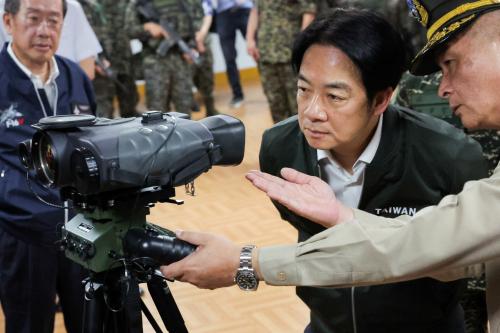With his re-election secured, where should President Barack Obama head on matters of nuclear arms control? Some would now consider it a back-burner issue, with his big Prague speech on the long-term goal of nuclear disarmament already given and a New Strategic Arms Reduction Treaty (New START) secured in his first term.
In fact, arms control provides an opportunity to achieve multiple important goals: further reducing nuclear arsenals and enhancing U.S. security, reinvigorating the U.S.-Russian relationship, stabilizing some aspects of broader U.S.-Chinese interaction, and saving money in a cash-strapped defense budget. Also, it may give a shot in the arm to global nonproliferation norms that, although unlikely to directly sway leaders in Tehran or Pyongyang, could better position the United States to mobilize pressure on those countries and to exert leverage on other proliferators in the coming months and years.
For these reasons, the Obama administration should pursue a New START II that would cut deployed strategic weapons from the New START level of 1,550 warheads apiece to 1,000. This would be a sublimit embedded in an aggregate limit of 2,000 to 2,500 total nuclear warheads each, which would also limit tactical and reserve warheads. This level strikes a balance between making meaningful cuts and avoiding overly dramatic measures that cannot be fully verified yet. Such an accord would lead to the development of monitoring provisions in the U.S.-Russian context that later could be applied to other treaties mandating deeper cuts and including additional countries.
It is too soon to set a fixed path to “nuclear zero,” and attempting to do so in Obama’s second term would be counterproductive. Yet, this is an opportune moment to bring nonstrategic systems into the formal bilateral process as a first step toward exploring the viability of more-robust cutbacks down the road.
As for the other countries that have nuclear weapons, there are steps they can take in the near term. These steps, which would not be part of a formal treaty with Russia and the United States, would include greater transparency regarding their nuclear weapons capabilities and political pledges not to increase their arsenals in coming years or at least not to let them grow very much.
Ideally, these political pledges would be complemented by an agreement by the four most important countries that have not ratified the Comprehensive Test Ban Treaty (CTBT)—China, India, Pakistan, and the United States—to support the treaty. Another valuable addition would be some type of fissile material cutoff accord. That would admittedly be an ambitious agenda. Obama’s second-term goals should include the CTBT and a fissile material cutoff treaty (FMCT), but not be dependent or centered on them.



Commentary
Nuclear Arms Control Opportunities: An Agenda for Obama’s Second Term
December 17, 2012